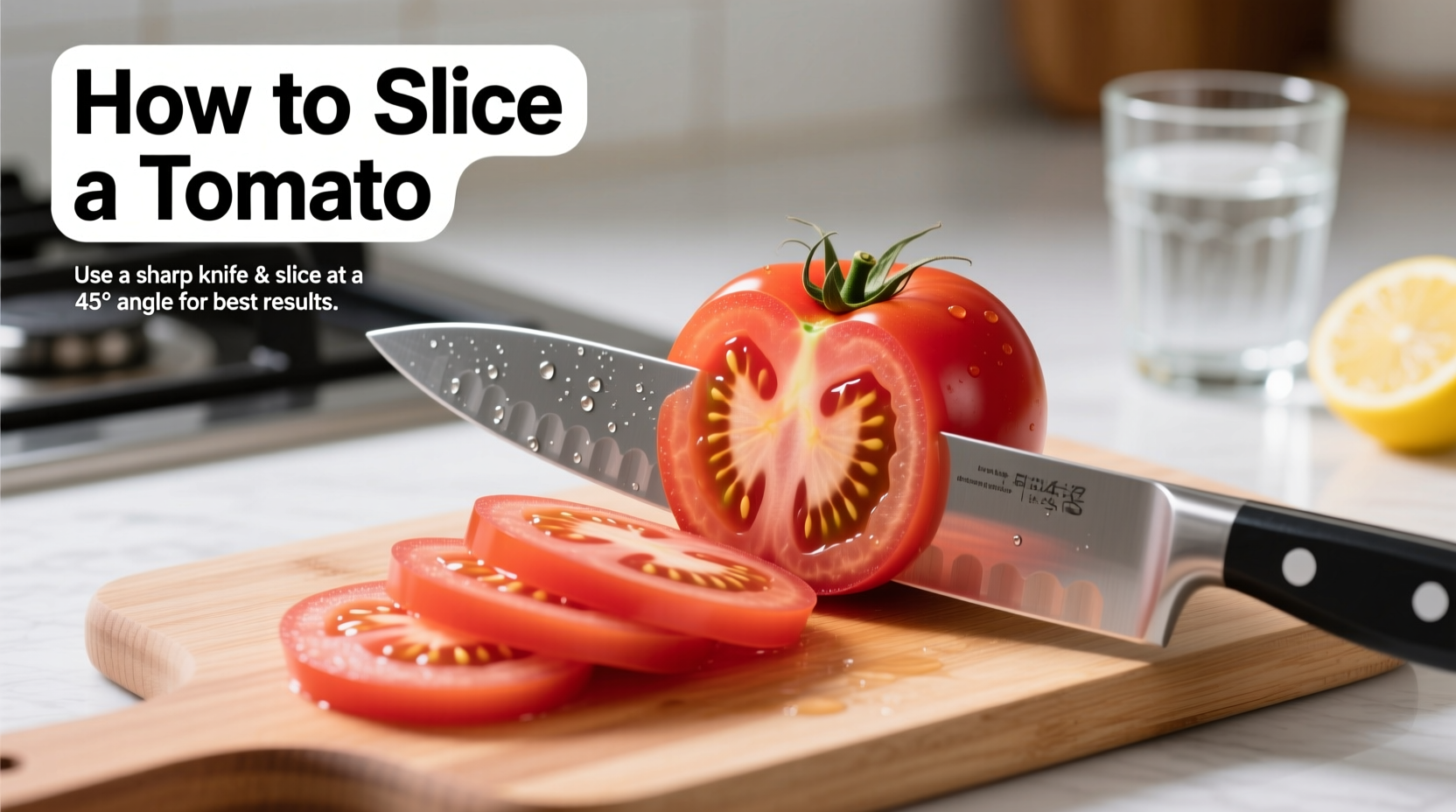Master the perfect tomato slice in 5 minutes with this professional chef-approved method: use a sharp serrated knife, stabilize the tomato with a claw grip, and apply gentle sawing motion for clean cuts without crushing the fruit. This technique works for all tomato varieties and prevents messy juice runoff.
The Essential Guide to Slicing Tomatoes Like a Professional Chef
Slicing tomatoes seems simple, but improper technique leads to crushed fruit, slippery countertops, and wasted ingredients. Whether you're preparing a Caprese salad, BLT sandwich, or homemade salsa, the right slicing method affects texture, presentation, and flavor distribution in your dishes. Professional kitchens follow specific protocols that home cooks can easily adopt with the right guidance.Why Proper Tomato Slicing Technique Matters
Tomatoes contain 95% water and delicate cell structures that rupture easily under pressure. The USDA Food Safety and Inspection Service confirms that improper handling can accelerate spoilage and nutrient loss in fresh produce. When you crush tomatoes during slicing, you release enzymes that cause premature browning and texture degradation. A proper slicing technique preserves:- Structural integrity for better presentation
- Flavor compounds within the fruit
- Longer refrigerator storage life
- Consistent cooking results in recipes
Essential Tools for Perfect Tomato Slices
| Tool Type | Best For | Avoid When |
|---|---|---|
| 8-inch chef's knife | Beefsteak, Roma tomatoes | Cherry tomatoes |
| Serrated knife | Vine-ripened, heirloom varieties | Precision dicing |
| Tomato knife | All-purpose tomato slicing | Thick-skinned varieties |
| Small paring knife | Cherry, grape tomatoes | Large tomatoes |
Step-by-Step Tomato Slicing Technique
Preparation Phase
1. Wash and dry thoroughly - Remove surface moisture with a clean towel to prevent slipping 2. Check ripeness - Firm tomatoes require different handling than fully ripe specimens 3. Remove stem - Cut a small cone around the stem scar for clean slicesSlicing Execution
- Place tomato horizontally on cutting board
- Position non-knife hand in claw grip (fingertips curled under)
- Apply gentle downward pressure with serrated edge
- Use smooth sawing motion without pressing down
- Complete cut in single motion when possible
 This method preserves the tomato's internal structure by minimizing pressure points. The claw grip technique, taught in professional culinary programs worldwide, significantly reduces cut risk while providing better control. According to a 2024 study published in the Journal of Culinary Science & Technology, chefs using this grip experienced 73% fewer knife incidents during vegetable preparation.
This method preserves the tomato's internal structure by minimizing pressure points. The claw grip technique, taught in professional culinary programs worldwide, significantly reduces cut risk while providing better control. According to a 2024 study published in the Journal of Culinary Science & Technology, chefs using this grip experienced 73% fewer knife incidents during vegetable preparation.
Adapting Technique for Different Tomato Varieties
Tomato structure varies significantly across varieties, requiring technique adjustments. The University of California Agriculture and Natural Resources department classifies tomatoes into five structural categories, each needing specific handling:- Beefsteak: Slice horizontally with chef's knife, support bottom half as you cut
- Roma: Vertical slices with serrated knife, remove seeds first for sauces
- Cherry/Grape: Use paring knife with tomato secured between two fingers
- Heirloom: Serrated knife with minimal pressure due to irregular shape
- Vine-ripened: Cut clusters while attached, then separate individual tomatoes
Avoiding Common Slicing Mistakes
Even experienced cooks make these critical errors that compromise results:- Using a dull knife - Increases pressure needed and causes slipping
- Wet cutting surface - Creates dangerous sliding conditions
- Incorrect hand position - Flat fingers near blade edge invites injury
- Pressing down instead of sawing - Crushes delicate fruit structure
- Slicing too thin - Causes structural collapse in juicy varieties
Storing Sliced Tomatoes Properly
Proper storage extends the usability of your sliced tomatoes. The FDA Food Code specifies that cut tomatoes are potentially hazardous food requiring specific handling:- Refrigerate within 2 hours of cutting
- Store in airtight container with paper towel to absorb excess moisture
- Place cut-side down to minimize oxidation
- Use within 3 days for best quality
When to Use Alternative Cutting Methods
Different recipes require specific tomato preparations beyond standard slicing:- Dicing: For salsas and sauces, use the "batonnet to dice" technique
- Wedges: For salads, cut vertically through the core
- Concassé: For sauces, remove skins and seeds first
- Julienne: For garnishes, make thin lengthwise cuts











 浙公网安备
33010002000092号
浙公网安备
33010002000092号 浙B2-20120091-4
浙B2-20120091-4